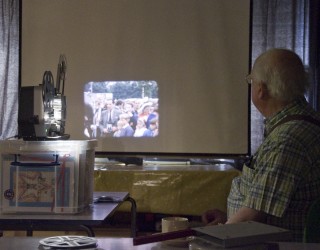Colin Killick about adding audio to 8mm film
The technicality of lip synching
Stevenage Museum

Transcript:
To be honest I think that was probably our best film. You may not have thought so when you saw it, but unfortunately you did not get the sound although because it was because it, the sound went on, into the projector. The film went into the projector the wrong way and remember when I switched it off, switched it back on again the sound came back because we, by then, devised a lip sync system – one of the big problems with a film that involves speech was syncing the sound to the lips and people used to hide this, I think one we saw the chap was on the telephone and the telephone happened to cover his lips so you couldn’t see that what he was saying was not necessarily what was on the film. But there was a system you could actually adapt your camera to make a blip for every picture and then you could line it up afterwards when you transferred the sound and they would transfer together. That was one of the big problems in the, in the very, very early days of sound you had a projector with variable speed, you had a recorder, or player, tape player with fixed speed and in between you had a loop and if the projector got too fast that loop tightened and slowed it down and if it got too slow the loop loosened and the projector speeded up, but it wasn’t good enough for lip sync I’m afraid. It was alright for music and sound, well not sound effects but music background it was good, lip sync no, not unless you used sprocketed tape which looked like film but was actually tape and then you could because it was held by sprockets rather than just floating loosely. You could actually sync.
Colin Killick









No Comments
Add a comment about this page